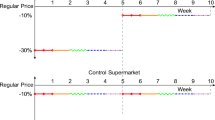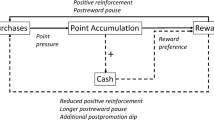Abstract
This article presents a framework and a model to evaluate the impact of promotions on company revenue and profit based on the examination of empirical findings from a restaurant cross-promotion in-market study. Promotions are difficult to evaluate because firms do not know to what extent the promotion creates incremental transactions or to what extent it simply provides discounts to existing customers who would have paid full price. To properly measure the impact, a firm must be able to determine the following: (i) the percentage incremental versus replacement transactions, (ii) the percentage incremental transactions from new versus existing customers, and (iii) the extent to which the promotion affected their overall spending behavior. This information can be combined with the discount amount of the promotion and the firm’s profit margin to arrive at the financial impact of the promotion. To maximize this effect, the company must first market the promotion to a similar but different customer base to minimize cannibalization. Second, they can institute an aggressive upselling program to counteract the consequence of discounting existing customers.


Similar content being viewed by others
References
Arkes, H.R., Joyner, C.A., Pezzo, M.V., Nash, J.G., Jacobs-Siegel, K. and Stone, E. (1994) Psychology of windfall gains. Organizational Behavior and Human Decision Processes 59(3): 331–347.
Cheong, K.J. (1993) Observations: Are cents-off coupons effective? Journal of Advertising Research 33(2): 73–77.
Ebster, C., Wagner, U. and Valis, S. (2005) The effect of verbal prompts on sales. Journal of Retailing and Consumer Services 13(3): 169–176.
English, W. (1996) Restaurant attrition: A longitudinal analysis of restaurant failures. International Journal of Contemporary Hospitality Management 8(2): 17–20.
Enz, C.A. (2004) Issues of concern for restaurant owners and managers. Cornell Hotel and Restaurant Administration Quarterly 45(4): 315–332.
Fierman, J. (1994) The death and rebirth of the salesman. Fortune 130(2): 80–9.
Heath, C. and Soll, J.B. (1996) Mental budgeting and consumer decisions. Journal of Consumer Research 23(June): 40–52.
Herrington, J. (2005) Are restaurant franchisees getting a positive return on their advertising fees? Journal of Promotion Management 11(1): 71–81.
Hodge, S.K. and Mason, C.H. (1995) Work versus windfall: An exploration of saving on subsequent purchase. Marketing Letters 6(2): 91–100.
Hoffman, D., Ketcham, A. and Taylor, F. (1992) Electronic coupons: A double-barreled sales promotion technique. American Journal of Business 7(1): 42–48.
Homick, A.V. (2007) An Exploration of Gift Giving: Re-Gifting as a Gift-Giving Behavior. ProQuest.
Jackson, F., Titz, K. and Defranco, A. (2004) Frequency of restaurant advertising and promotion strategies. Journal of Food Products Marketing 10(2): 17–31.
Jamieson, L.F. and Bass, F.M. (1989) Adjusting stated intention measures to predict trial purchase of new products: A comparison of models and methods. Journal of Marketing Research 26(3): 336–345.
Kimes, S.E. (2008) The role of technology in restaurant revenue management. Cornell Hospitality Quarterly 49(3): 297–309.
Kimes, S. and Beard, J. (2013) The future of restaurant revenue management. Journal of Revenue and Pricing Management 12(5): 464–469.
Kimes, S.E. and Dholakia, U. (2011) Restaurant daily deals: Customers’ responses to social couponing. Cornell Hospitality Report 11(20): 1–18.
Lehmann, D.R., McAlister, L. and Staelin, R. (2011) Sophistication in research in marketing. Journal of Marketing 75(4): 155–165.
Leone, R.P. and Srinivasan, S.S. (1996) Coupon face value: Its impact on coupon redemptions, brand sales, and brand profitability. Journal of Retailing 72(3): 273–289.
Martinko, M.J., White, J.D. and Hassell, B. (1989) An operant analysis of prompting in a sales environment. Journal of Organizational Behavior Management 10(1): 93–107.
Mazumdar, T., Raj, S.P. and Sinha, I. (2005) Reference price research: Review and propositions. The Journal of Marketing 69(4): 84–102.
Neslin, S. and Clarke, D. (1987) Relating the brand use profile of coupon redeemers to brand and coupon characteristics. Journal of Advertising Research 27(1): 23–32.
Neslin, S. and Shoemaker, R. (1983) A model for evaluating the profitability of coupon promotions. Marketing Science 2(4): 36–388.
O’Brien, C. and Jones, L. (1995) Do rewards really create loyalty? Harvard Business Review 73(3): 75–82.
Orr, A. (1995) Customers for life. Target Marketing 18(3): 20–31.
Rhoads, G.K. and Lagace, R.R. (1989) Age and Gender Factors Affecting the Negotiation Behaviors of Industrial Buyers. In American Marketing Association Winter Educators’ Conference Proceedings by Terry L. Childers, et al, pp. 105–109.
Roth, M. and Romeo, J. (1999) Co-promotions drive health plan satisfaction and subscriber appeal. Marketing Health Services 19(4): 20–27.
Roth, J. and Simonin, B. (2003) Brought to you by brand A and brand B: Investigating multiple sponsors’ influence on consumers’ attitudes toward sponsored events. Journal of Advertising 32(3): 19–30.
Srinivasan, S. and Anderson, R. (1998) Concepts and strategy guidelines for designing value enhancing sales promotions. Journal of Product & Brand Management 7(5): 410–442.
Taylor, G. and Long-Tolbert, S. (2002) Coupon promotions in quick-service restaurants: Preaching to the converted? Cornell Hotel and Restaurant Administration Quarterly 43(4): 41–47.
Thaler, R.H. (1985) Mental accounting and consumer choice. Marketing Science 4(3): 119–214.
Varadarajan, P. (1986) Horizontal cooperative sales promotion: A framework for classification and additional perspectives. Journal of Marketing 50(2): 61–73.
Author information
Authors and Affiliations
Corresponding author
Rights and permissions
About this article
Cite this article
Norvell, T., Horky, A. A framework and model to evaluate promotions: A restaurant cross-promotion in-market study. J Revenue Pricing Manag 16, 345–356 (2017). https://doi.org/10.1057/rpm.2016.14
Published:
Issue Date:
DOI: https://doi.org/10.1057/rpm.2016.14




